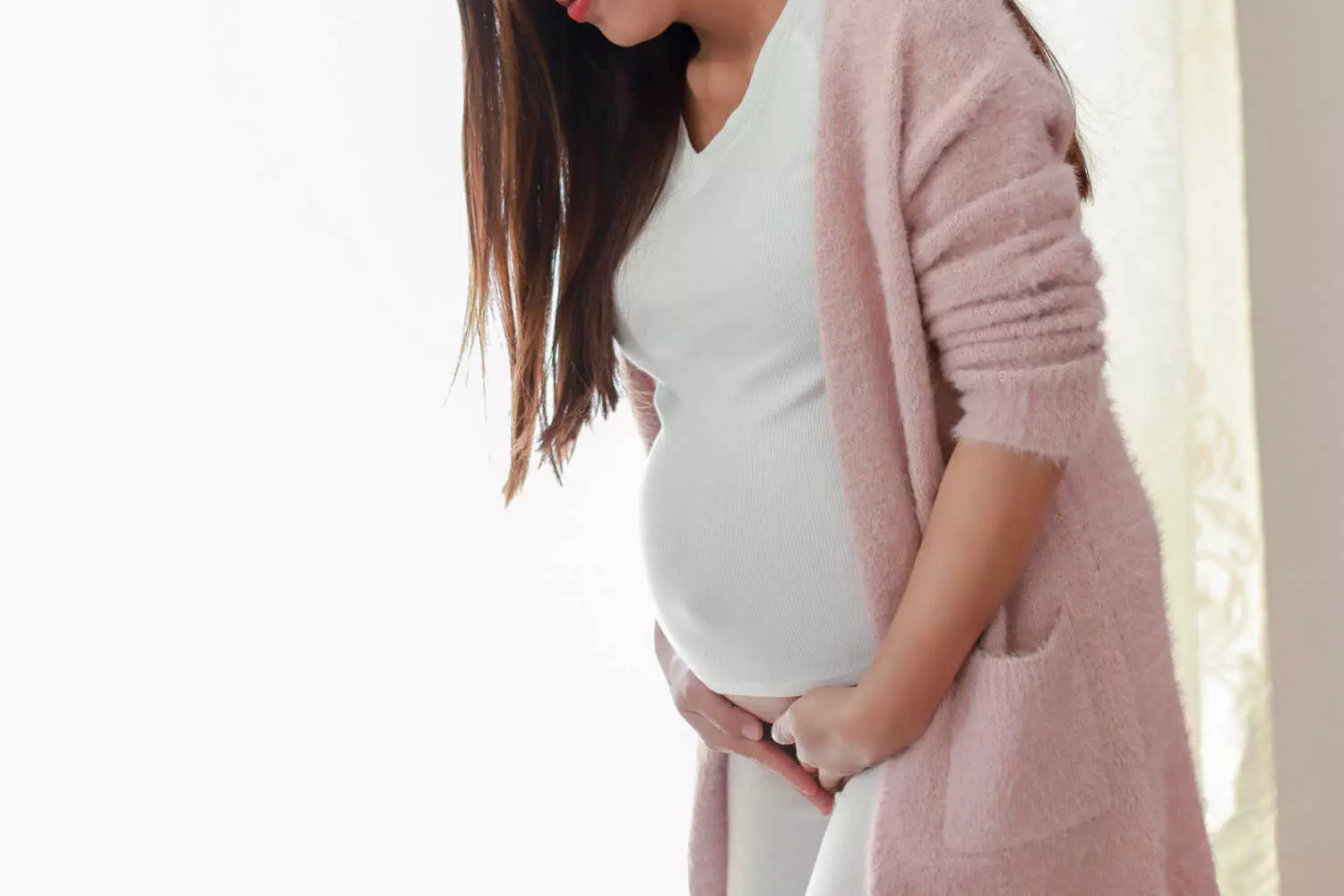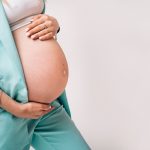
Fetal Development – Know Everything About Your Baby’s Hair
5 min readWritten by Tarasha Chandra


Pregnancy is a time to eat healthy and nutritious food to ensure proper growth and development of the mind and the body of you and your little bean. Eating right is also essential for the health of the baby and especially for the growth of the hair. Your baby’s hair growth happens in cycles of shedding and regrowing. As a parent, you are probably keen to know everything about your baby’s hair growth during pregnancy.
The development of the baby’s hair depends to a large extent on the mother’s diet. Eating foods that help with good hair growth is important for the baby. The hair of the baby starts growing in the womb around the 14th to 15th week of her pregnancy. The hair follicles start appearing and no further growth takes place after the baby is born. Thus, it is important that the mother eats well so that good hair growth is seen after the baby comes into the world. Scroll down to learn more about the chronological order of development of fetal hair on your little one’s hair and body.
In This Article
- Fetal Development of Hair on Your Baby’s Head
- Fetal Development of Hair on Your Baby’s Body
- What You Can do During Pregnancy?
- Key Milestones in the Fetal Development of Your Baby’s Hair
- FAQ’s
Fetal Development of Hair on Your Baby’s Head
Hair on the baby’s head also develops during the fetal stage. What the mother eats plays a major role in the hair formation in the baby. For this reason, mother should eat nutritious food that encourages healthy hair growth in the fetus.
Here is what you should know about the development of baby’s hair.
- The hair follicles form a pattern on the baby’s scalp that stays for life during the fetal stage.
- After birth, no new follicles appear.
- At 22 weeks of pregnancy, the hair can be seen on the head of the baby.
- It can grow in a bunch or very little by the time the baby is born.
- Once the hair starts growing, the melanin-producing cells start functioning, adding colour to the strands.
- Predicting the hair and the hair colour of the baby is not easy.
- Many genetic factors decide the right amount of melanin that goes in every hair strand but there is no evidence for their interaction to produce different hair colours.
- This is the reason why the hair colour and texture stay as a surprise and the baby’s hair can resemble anyone in the family.
- It is not important that the hair of the baby at birth be the same for the rest of their life.
- Babies are seen losing their hair in the initial 6 months and new hair being replaced by it.
[Read : Healthy Diet During Pregnancy]
Fetal Development of Hair on Your Baby’s Body
Your baby will develop hair not only on their head but also on the rest of their body before entering this world. It is a surprise that most of the development is done before the baby is born. Let us see the process of growth.
- The hair follicles appear deep in the skin of the baby around the 14th to 15th week of pregnancy.
- By 20 weeks, small hair starts sprouting from the follicles on the eyebrows, chin, upper lip.
- This is also the time when hair can be seen on the shoulders, back, ears and forehead and also called lanugo.
- Lanugo holds a greasy substance called vernix, which protects the skin of the baby from consistent exposure to the amniotic fluid.
- This lanugo covers the whole body and most of it is gone before the child is born.
- It is seen that premature babies are born with a lot of hair as they come before time and the hair is not shed by then.
- On the other hand, in full-term babies, this hair is shed off.
- Lanugo starts to fall within the initial weeks of birth but for some babies, it can stay for long as well.
- The colour of the lanugo can be different from the hair on the baby’s head.
- The hair colour is dark and seen better
What You Can do During Pregnancy?
The food habits of the expectant mother influence the growth and development of the baby, so does the baby hair as well.
We list a few pointers you can keep in mind during pregnancy to ensure that your little one has healthy hair
- The hormone estrogen influences the hair growth of the foetus.
- Consuming foods rich in protein like eggs is good for hair growth.
- Having foods rich in Omega 3 helps as well but it is important to consult a doctor before that as all fishes are not suitable in pregnancy.
- Fruits that are rich in Vitamin C are also good as they help in boosting hair growth.
- Having nuts that are rich in minerals, fibre and protein also helps in the growth of the hair.
- Not only eating well but taking prenatal vitamins is also important.
[Read : How To Get Proteins In Pregnancy In A Vegetarian Diet?]
Key Milestones in the Fetal Development of Your Baby’s Hair
| Pregnancy Week | Key Milestone |
| 14 Weeks | Formation of hair follicles start |
| 20 Weeks | The first hair starts sprouting on lip, chin, eyebrows and upper lip |
| 22 Weeks | The hair on the head is visible. Lanugo also starts covering the body especially on back, ears, shoulder and forehead. |
| 23 Weeks – Birth | Production of melanin starts; this even adds colour to the hair. |
| 26 Birth | The present lanugo starts falling in weeks or months. |
The development of your baby’s hair starts in the fetal stage. While genes play a crucial role in how your baby’s hair turns out, your diet during pregnancy also plays a vital role. As an expecting mother, you must have a healthy, nutritious and balanced diet. Also remaining stress-free is equally important as it boosts the hair growth of your little one growing in your womb.
FAQ’s
1. Can Babies Ingest the Hair in the Womb?
Yes, the Lanugo, the soft hair that offers protection to the baby and keeps them warm keeps growing with the baby. It sheds off by the time the baby is born and in case it gets ingested by the baby, it will come out in the form of their first poop.
2. Does Heartburn Mean My Baby Has Hair?
It is interesting to know that heartburn and fetal hair growth go together. Hair growth is due to the hormone estrogen. When this hormone settles in the thorax region it leads to heartburn.
3. How Big is a 11 Week-Old Fetus When Hair Falls Off?
The soft hair covering of the baby’ skin, also called lanugo, starts falling at 11 weeks. At this time, the baby is 11 inches long from head to toe which is 280 mm and the baby weighs 1700 grams at this stage.
Read Also: Fetal Development – Know Everything About Your Baby’s Hearing Development

Tarasha Chandra,PGDPM
She loves to dance, listen to music, cook, and read in her free time. She is transparent, intuitive, quick-witted, and loves to spend time with her near and dear ones. She believes in taking each day as it comes.Read more.
Responses (0)
Want curated content sharply tailored for your exact stage of parenting?
Related articles

300 Popular Baby Names That Mean Weather With Meanings

Mucus Plug In Pregnancy – What It Is, And Its Importance

HIIT Exercises During Pregnancy – Are They Safe?

Can Vitamin C Prevent Pregnancy – Everything you Need to Know

Top 200 Kannada Baby Boys Names With Meanings

Top Nutrients That are More Important During Pregnancy
Sponsored content
Discover great local businesses around you for your kids.
Get regular updates, great recommendations and other right stuff at the right time.





